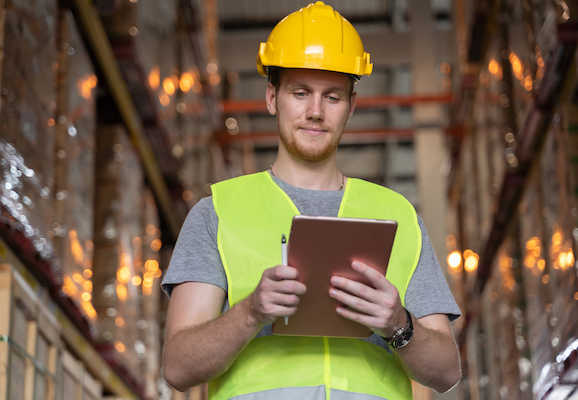
When it comes to recycling your company’s scrap metal, you need to have a game plan. No matter how large your company is, a simple scrap audit checklist can save you a lot of time throughout the collection process and earn you a better return for your scrap.
In this article, you will learn everything you need to include in your business’s scrap audit checklist. Plus, get answers to these important questions:
- What exactly is a scrap metal audit?
- Where should you start?
- How can you ensure that all of your scrap will be recycled properly?
- How will a scrap audit help you get a greater return for your scrap?
Ready to set up the ultimate scrap audit checklist for your company? Keep reading to get started.
What is a Scrap Metal Audit?
A scrap metal audit is a formal examination of the recycling processes that your business currently runs and maintains throughout the year. These processes may include the collection of:
- Discarded metal
- Retired electronics
- Old or broken machinery
The goal of the audit is to highlight any holes in your recycling game plan so you can improve upon them and formulate a stronger process.
Why Does Your Company Need One?
It’s safe to say that your business always wants to do its part to keep the planet clean. When you have a solid recycling business plan, you can save the environment by reducing the need to mine more metals.
But, did you know that a strong scrap metal audit will also help you maximize your returns?
In fact, with the right audit in place, you will learn how to sort your scrap metal, store it properly, and improve your recycling schedule. This, in turn, will allow you to recycle metal more efficiently and improve your bottom line.
6 Checkmarks Every Scrap Audit Checklist Should Have
Ready to streamline your business’s recycling game plan? Keep reading to create the best scrap audit checklist for your company.
1. Understand the Metal Recycling Process
Before you dive headfirst into your scrap audit, you should know what the metal recycling process actually looks like.
Why?
Because the more you understand how the step-by-step metal recycling process works, the better you can prepare your business to successfully collect, store, and recycle your metal.
Here’s how metal is recycled.
Scrap Metal Recycling Basics

To keep it short, when metal is recycled through a certified scrap metal recycling company, the metals are first sorted by metal type and scanned for quality assurance. Any plastic, rust, or paint attached to the metal is stripped away and cleaned off.
Then, the metal is compacted, squeezed, and processed through hydraulic machinery and hammer mills. Once the small bits of metal are thrown into a furnace to melt, they are then purified and solidified.
Finally, the recycled metal is now ready for transport and reuse!
Pro-Tip: At the end of the day, the more you collect, sort, and clean your metal before you send it to a recycler, the higher the value you will see.
2. Get Your Team Onboard
Accountability is the name of the game. If you want your recycling efforts to really pay off, then you need to get your team in on the audit as well.
For starters, make your employees aware of your plan to amp up the business’s recycling program. Tell them that you are going to create a formal scrap audit and ask them how they would like to become involved.
In this part of the plan, you can assign different groups of people to different team efforts. For instance, Group A can collect the metal. Then, Group B can sort it while Group C finds a place to store it.
This is a great way to get your team in on the game plan and ensure everybody knows the end goal: to improve the recycling process!
3. Set Up a Scrap Inventory Check
The next item on your scrap audit checklist should be an inventory check.
This may look similar to an inventory check for other materials in your company… except it will be for the scrap metal that you have collected over a designated period of time.
Work Out the Details

You may be wondering how often you should take a scrap inventory check. This ultimately depends on the size of your business and the amount of recyclable metal you accumulate.
For instance, if you are a very large company that puts out a lot of excess scrap, you might want to take inventory every month. Meanwhile, a smaller company might only have to check their stockpile quarterly, semi-annually, or annually.
Once you take into account how much scrap you have and how much you are able to store at a time, then you can work out the details on how often you need to transport it to a recycling facility. This will help you streamline your entire recycling process and save time.
4. Sort Your Metals
Pay attention, you definitely don’t want to forget this next step!
One of the most important aspects of your scrap audit is the metal itself. There are 2 main groups of metals: ferrous and non-ferrous. Within these 2 groups, you will find all kinds of different metals, including:
- Steel
- Cast iron
- Aluminum
- Lead
- Copper (& your various red metals)
- Tin
If you are able to tell the difference between these types of metals, you and your team can separate them yourselves and earn a greater return when you send them to the recycler.
Pro-Tip: Using a magnet can help you sort your metals as ferrous is magnetic while non-ferrous is not.
5. Ask the Right Questions While Storing Scrap
Next, you will want to stockpile your scrap in a safe and dry environment while you wait to send it to a recycling facility. Here’s why.
Scrap that is left out in the rain can easily rust and lose its value. Furthermore, if it is left in an inconvenient location it can cause a lot of problems for your business.

For instance, does the location of your stockpile allow access for fire control purposes? If not, you may want to seriously consider relocating your scrap!
Questions to Ask During the Audit
While you are conducting your scrap audit, you will want to make sure to check all of these questions off of your list to ensure you are storing your scrap properly:
- Are scrap metal stockpiles free of plastic, wood, and other debris?
- Are proper procedures and equipment used to prevent spills and leaks from scrap metal that contains fluids?
- Do you have metals separated and stored to increase their market value?
- Is scrap metal stored off the ground in containers, covered or under a roof; or in stockpiles on a concrete surface?
And finally, are controls in place to manage stormwater run-off? If you answer all of these questions, you will set your business’s scrap recycling plan up for success.
6. Partner with a Certified Scrap Metal Recycling Company
Last but not least, you will want to find the right recycling facility to take your scrap for you.
When searching for a scrap metal recycling company, make sure you find one that is environmentally conscious and offers eco-friendly recycling procedures.
Furthermore, if you have a hefty load of scrap that needs to be moved, search for a company that offers scrap metal transportation services. This can save you a ton of time and money in the long run!
Start Your Scrap Audit Checklist with GLE Scrap
At GLE Scrap, we want to make sure your business sees success with its scrap audit checklist. From start to finish, we’ll help you recycle your scrap. We even come to you!
If you are ready to partner with a trustworthy scrap metal recycling company, give us a call. We ensure that your excess materials don’t go to waste all while maximizing the value you receive in return.



